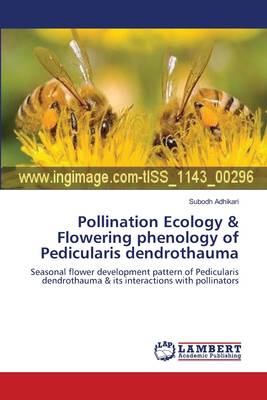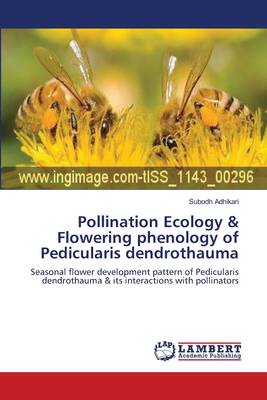
- Afhalen na 1 uur in een winkel met voorraad
- Gratis thuislevering in België vanaf € 30
- Ruim aanbod met 7 miljoen producten
- Afhalen na 1 uur in een winkel met voorraad
- Gratis thuislevering in België vanaf € 30
- Ruim aanbod met 7 miljoen producten
Zoeken
Pollination Ecology & Flowering phenology of Pedicularis dendrothauma
Seasonal flower development pattern of Pedicularis dendrothauma & its interactions with pollinators
Subodh Adhikari
Paperback | Engels
€ 66,45
+ 132 punten
Omschrijving
This book has been prepared based on the research done on a new species: Pedicularis dendrothauma, an endemic to Nepal. While the study on floral phenology and pollination ecology is relatively new field of research, this work is first of its kind in Nepal. Study on floral phenology and pollination ecology of P. dendrothauma was carried out in the Annapurna Conservation Area, Nepal. Plant height, longest leaf, number of leaves, flowers, and flowering stalks were recorded on 180 epiphytic flowering individuals. Ten plants (5 at ground level and 5 at tree canopies) were used for more intensive study on floral phenology. Six plants (3 at each level) were selected for the pollination studies. A Single Rope Climbing Technique was used to study the canopy plants. A total of 70 hours was spent watching the flower visitors. Flowers were matured within 15 days. No pollinators were recorded during the period of observation possibly because of rainy weather. Few flower visitors were collected from the vicinity and identified. Mornings and sunny weather were found to be the best for visitors' activities, while dawn, dusk, and the foggy -rainy weather showed less activity.
Specificaties
Betrokkenen
- Auteur(s):
- Uitgeverij:
Inhoud
- Aantal bladzijden:
- 104
- Taal:
- Engels
Eigenschappen
- Productcode (EAN):
- 9783659377013
- Verschijningsdatum:
- 12/02/2014
- Uitvoering:
- Paperback
- Afmetingen:
- 150 mm x 220 mm
- Gewicht:
- 163 g

Alleen bij Standaard Boekhandel
+ 132 punten op je klantenkaart van Standaard Boekhandel
Beoordelingen
We publiceren alleen reviews die voldoen aan de voorwaarden voor reviews. Bekijk onze voorwaarden voor reviews.








